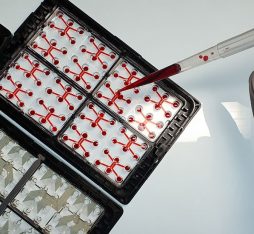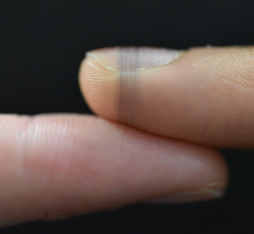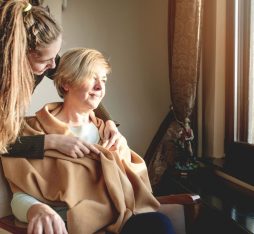• The new tool has major potential in the field of perfumes, and in the food industry which is eager to improve the accuracy of quality controls.
• It is unlikely to replace specially trained dogs, but the new device could soon be used to sniff patients’ breath and certain kinds of wounds to evaluate the seriousness of infections.
Could IoT odour detectors soon be used to warn of impending fires before flames become visible or to identify the presence of specific pathogens in patients? Since the 1980s, large numbers of researchers have worked on the development of odour-detection devices or electronic noses, however until now, their efforts have been hampered by sensors that were either insufficiently sensitive or too limited in scope. In Grenoble, Aryballe Technologies, a start-up spun off by the French Alternative Energies and Atomic Energy Commission, has developed an IoT device that has overcome these obstacles. It is made up of a sensor and advanced digital optics grafted on to silicon chip. “When I was MIT in the 2000s, I first encountered the possibility of using biosensors and an optical transmission system to create images of odour fingerprints”, explains Aryballe founder and CEO, Tristan Rousselle. The process is similar to one that is used in medical diagnostics: “When you send in a sample for medical diagnosis, it is passed through a machine that uses antibodies to detect pathogens that indicate the presence of disease. The only difference with olfaction is that the samples submitted are in gas phase, which is why we had to specifically adapt our systems.”
Customers need to analyse data on highly dilute traces. Imagine a cup of coffee poured into a swimming pool.
Analysing odours with light signals
Aryballe’s sensors are based on peptides inspired by protein sequences that react with . “The peptides are fragments of compounds that play the role of biosensors. When they are activated, they disturb a light signal in a manner that is proportional to the quantity of molecules present in the air, which enables us to take measurements,” points out Tristan Rousselle. At the heart of each sensor, a silicon wafer with an array of 64 biochemical nano-sensors (peptides) sends out 64 light signals. “Individual smells generate patterns on the sensors that are transformed into light signals. The technology built into the connected object then compares the signal to a reference database and uses machine learning to identify odours that are present. In cases where sensors are affected by humidity, the device is able to digitally remove it from olfactory signatures.
Numerous industrial applications
There are a wide range of potential uses for the new technology, and the start-up already has customers in a variety of sectors including perfumes where its devices are used for quality control. “Customers need to analyse data on highly dilute traces. Imagine a cup of coffee poured into a swimming pool.” The solution cannot be used to replace sniffer dogs that search for drugs and bodies, but it does have a range of safety applications: “In many cases, fires are preceded by odours. Our devices, which detect smells of burning plastic in cars and power stations, can emit effective early warning alerts.” Electronic noses are also useful in the food industry, where they can monitor the ripening of fruit and vegetables and detect smells of rotting merchandise in shipping consignments. “We are also specialised in fermentation, and have customers in brewing, cheesemaking and other sectors.”
A potential market in healthcare
Healthcare may also soon benefit from these technologies. “We want to remain discreet on this topic, because there was a lot of buzz about innovations that can imitate dog noses. We have now decided to focus on bacterial odours, that is to say on the capacity of our innovation to evaluate the seriousness of wounds in diabetic patients, and levels of pulmonary infection. We are also working on breath and body odour tests. Results and microbiological applications are what matters to professionals in the sector.”
volatile organic compounds (VOCs)
Volatile organic compounds are a wide range of substances, which may be biogenic (natural) or anthropogenic (human) origin. They are highly volatile and spread easily through the atmosphere in workshops and offices. Source: Ademe.
 Tristan Rousselle
Tristan Rousselle








